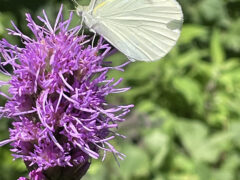
prairie blazing star
Liatris pycnostachya
An outstanding native of the great plains grows even in wet prairies. Breathtaking in gardens … Continued
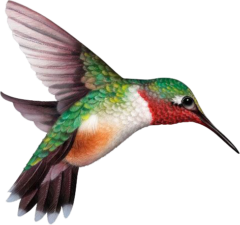 Hummingbirds, bees and butterflies are well-known pollinators, but there are thousands of unsung pollinator heroes, including moths, wasps, flies, and beetles, many mammals, birds, and reptiles, who also take on the job.
Hummingbirds, bees and butterflies are well-known pollinators, but there are thousands of unsung pollinator heroes, including moths, wasps, flies, and beetles, many mammals, birds, and reptiles, who also take on the job.
Pollinators move from plant to plant, fueling up with pollen and nectar from blooming trees, shrubs, perennials, annuals, vegetable plants, and herbs. As they move, the pollinators transport and deposit pollen, fertilizing plants and allowing them to reproduce.
Pollinator plants can be native and non-native, but not all flowering plants are equal when it comes to providing the highest quality protein-rich pollen. Many hybrids don’t even produce pollen at all. The following list includes pollen-rich plants to include in your garden to provide pollinators with food.
Local butterfly expert Lenora Larson has created these informational handouts. You can download them here!
• Butterflies: Flying Flowers in your Garden!
• A Vital Connection: Native Plants and Butterflies
• Long Lips Farm Caterpillar Foodplants
• Butterfly Bartending: Nectar Flowers
• Long Lips Farm: Selected Butterfly Nectar Flowers
• Bee Friendly: Plants for Bees and Other Pollinators
Since 1970 the population of North American birds has dropped nearly 30% — almost three billion birds have vanished from our forests, grasslands, and backyards in less than a human lifetime. It’s a chilling fact that makes it clear that we must act as individuals to help ensure their survival.
Most importantly, ninety-six percent of all terrestrial bird species rear their young on insects so it is also important to grow plants that feed insects to provide a well-rounded habitat in your garden.
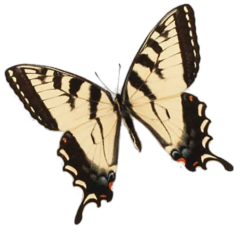

Liatris pycnostachya
An outstanding native of the great plains grows even in wet prairies. Breathtaking in gardens … Continued
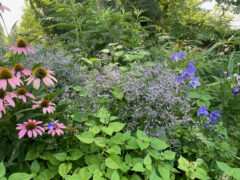
Limonium latifolium
One of our favorite perennials, this hardy, heat and drought tolerant perennial produces airy sprays … Continued
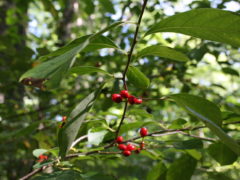
Lindera benzoin
Large, multi-stemmed shrubs have aromatic twigs and foliage. Spicebush is an important native plant for … Continued
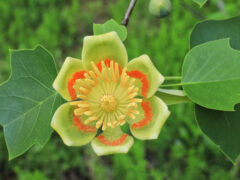
Liriodendron tulipifera
Tulip trees are fast growers, often measuring growth of more than 2′ per year. Tulip-shaped flowers … Continued
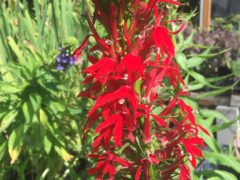
Lobelia cardinalis
Cardinal flowers bloom with tall spikes of lipstick red flowers in August in moist soil. … Continued
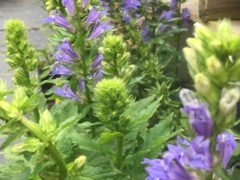
Lobelia siphilitica
Lobelia siphilitica is a showy native with light to dark blue flowers in late summer. … Continued
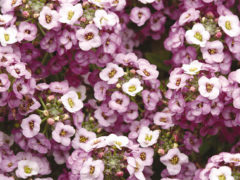
Lobularia maritima
Tiny fragrant white, pink, and lavender flowers open in clusters on this low-growing annual that … Continued
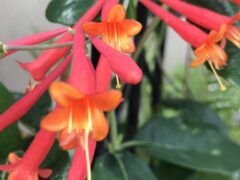
Lonicera sempervirens
A non-stop bloomer from late spring through the summer with showy clusters of orange-red flowers. … Continued
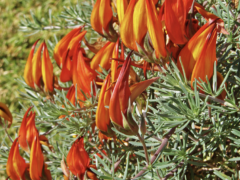
Lotus maculatus
Unusual bicolor blooms look like parrot’s beaks, yellow at the base darkening to orange and … Continued
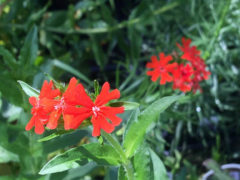
Lychnis chalcedonica
An heirloom flower grown in gardens since colonial times. Dense heads of bright scarlet flowers. … Continued
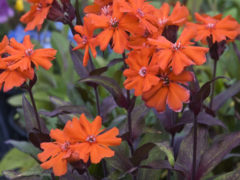
Lychnis arkwrightii 'Orange Gnome'
Bright orange-scarlet flowers measure 1½” across are produced in abundance beginning in early summer and … Continued
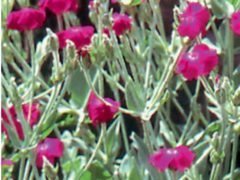
Lychnis coronaria ‘Blood Red’
Pretty silver-gray foliage is topped with red blooms in spring. Plants grow 18-24″ high. Can … Continued